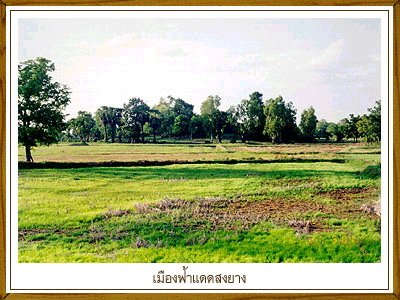 |
| kalasin Thailand |
MY HOMETOWN KALASIN
Comparatively small among its sister provinces of the Northeast, Kalasin was once relegated to the status of an Amphoe before being restored its present administrative entity. Despite its smallness, Kalasin is a busy agricultural province with considerable attractions. Kalasin is 519 kilometers from Bangkok.
Kalasin and its provincial capital sit at the heart of the northeast. It is known for its traditional music and for being the site of the biggest concentration of dinosaur fossils ever discovered in Thailand.
Lam Pao Dam
built across the Lam Pao and Huay Yang rivers is thirty five kilometers from town center on the Kalasin Yang Talat highway. The reservoir can hold up to 1260 million c.m. of water and is as beautiful as any natural lake. Along the bank of the reservoir has been built an open zoo to serve as a major attraction of the Northeast.
Phrae Wa Silk
a most renowned hand-crafted product of Kalasin, is hand-woven in unique colourful designs by Phu Thai people of Ban Phon Village, Amphoe Kham Muang. Phu Thai People are descendants of Vietnamese immigrants from Muang Taeng. Phrae Wa silk is available at Kalasin Cultural Center and souvenir shops in the province.
Phra Buddha Saiyat Phu Khao
About six kilometers away from Sahatsakhan Market is the Reclining Buddha Image carved on the stone cliff. It is different from other reclining Buddha images as the figure reclines on the left-side instead of the normal right-side. Built around 1692, the image is highly venerated by local worshippers.
Culture & Tourism Promotion Center
located in the area of the Thirawat Hospital, exhibits ways of life of the local people as well as sells selected items of Kalasin local products such as Phrae Wa fabric, local musical instruments, etc.
Wat Klang in Amphoe Muang
houses a Buddha image in black and cast in bronze. Of fine craftsmanship, it is the main image of the province, and during any dry spell, it is borne aloft on a procession to plead for rain. At the base of the image are inscribed ancient Thai letters.In addition to the black Buddha image, Wat Klang also houses a large replica of the Holy Footprint made in sandstone. Moulded during the reign of the Lawa, the Footprint used to be located on the bank of the Lam Pao River but was removed to Wat Klang when the bank became eroded.




No comments:
Post a Comment